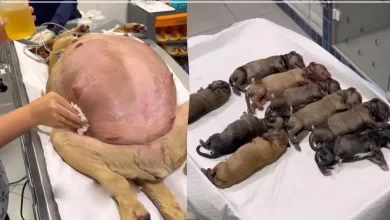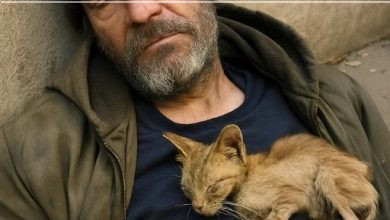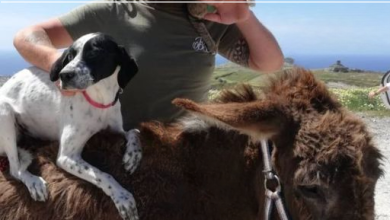She Deceived My Granddaughter—So I Let Her Uncover the Truth Herself
She Lied to My Granddaughter—So I Let the Truth Speak for Itself
After my daughter Meredith passed away last year, she left behind my 6-year-old granddaughter, Emma. I wasn’t well enough to take custody myself—my health made that impossible—but I did everything I could to remind Emma she was loved. I sent gifts. I sent money. I tried to stay present, even from a distance.
Emma’s father didn’t wait long to move on. He remarried quickly—her name was Brittany. I held out hope that she would care for Emma with the same tenderness I would have.
I was wrong.
For Emma’s 7th birthday, Brittany reached out asking for $1,000—she said Emma wanted a Dreamhouse, new clothes, and books. I sent the money. I also mailed something special: a pair of sapphire earrings—Meredith’s birthstone.
A few days later, I called Emma, eager to hear her excitement.
Instead, she asked, “What gifts?”
Confused, I pressed further. She said, “Stepmom said you didn’t send anything. She told me you don’t love me anymore.”
And the earrings?
“She wore new ones to dinner. She said you gave them to her because she’s the one taking care of me.”
That was the moment it hit me—I wasn’t Emma’s grandmother in Brittany’s eyes. I was just her personal bank account.
I didn’t cry. I didn’t raise my voice.
I built a trap instead.
The next time Brittany asked for more money “for Emma,” I agreed. But this time, I made one small, critical change.
You see, I’m not just a fragile grandmother with health issues and a walker. I spent over three decades working in forensic accounting. I know a lie when I see one—and how to follow the money when it’s being misused.
I told Brittany I’d send a check through the mail instead of wiring funds—claimed I was having online banking problems. She wasn’t thrilled but agreed.
The check I mailed looked completely ordinary. It had my signature, the right amount—$1,200—and all the correct banking details. But what Brittany didn’t notice was a very specific clause typed at the bottom in small print:
“This payment is intended exclusively for the benefit of Emma Dawson, minor child, for birthday gifts. Cashing this check affirms that understanding.”
That tiny detail changed everything.
Two days later, Brittany deposited the check.
And just like clockwork, she posted on Instagram: her nails freshly manicured, hair touched up, Starbucks drink in hand, standing in front of a department store mirror. The caption? “You deserve to treat yourself 💅✨”
I took a screenshot.
A few days later, I called Emma again. “Did you get your birthday gifts, sweetheart?”
She paused. “Stepmom said they’re coming soon.”
Another week went by—still nothing.
Then I texted Brittany: “Hope Emma loved everything! Would love to see a photo of her with her presents.”
She replied with a blurry image of a doll still in its packaging on a table.
I ran a reverse image search.
It was a stock photo from an online retailer.
That was all I needed.
I gathered everything—the check, the Instagram posts, the screenshot of the stock photo, and even screenshots from my video calls with Emma where her room clearly hadn’t changed.
Then I called Linda—a sharp lawyer and former mentee of mine.
“If someone lies about using money for a child and spends it on themselves,” I asked, “what are the options?”
“With the kind of evidence you have?” she said. “That could qualify as misappropriation of funds. Especially if you’re willing to testify.”
I was.
I filed a formal report with Child Protective Services. Not to take Emma away—but to make sure someone was looking out for her.
Then I sent a courteous email to Emma’s father—my late daughter’s ex-husband. A man who had all but vanished after Meredith died.
I wrote: “Just a note to say I’ve started documenting how Emma’s birthday funds are being used. I’ve contacted CPS for her safety. I want to believe Brittany meant well, but the evidence points elsewhere.”
Two hours later, he called.
“I didn’t know,” he said. “I thought you were sending things directly to Emma.”
I told him everything. The earrings. The clause. The fake photo. Emma’s confusion. He was silent for a long time.
“I’ve really dropped the ball,” he said quietly. “I want to fix this.”
The next day, CPS did a scheduled visit. Nothing unannounced—just the start of a routine inquiry.
Emma spoke honestly.
“She said Grandma didn’t send anything,” she told them. “But I saw the envelope with Grandma’s name. She hid it.”
When CPS asked to see the gifts, Brittany couldn’t produce anything—just the same fake doll from the photo.
Meanwhile, I continued calling Emma regularly. I recorded bedtime stories for her and mailed her fairy tales with handwritten notes.
Then came a surprise I didn’t see coming.
Two weeks later, Emma’s father showed up at my door.
With a suitcase.
And Emma.
“I’m filing for full custody,” he said. “I can’t undo what happened, but I want to make it right.”
Brittany had broken down when confronted. She admitted the truth, then claimed she “just needed a break” and “wanted to feel appreciated.”
She left the next morning.
I didn’t feel victorious. I just felt relieved.
Emma stayed with me for a few weeks while her dad sorted everything out. She smiled again. She laughed. She slept through the night.
One evening, she asked me, “Grandma, are you mad at Stepmom?”
I thought for a second. “No, honey. I’m just sad she didn’t see how amazing you are.”
Emma nodded. Like she understood more than most grownups would.
Her father became more present than ever. He cooked, read bedtime stories, even let Emma paint his toenails once. Slowly, they found their rhythm.
He moved into a small place nearby so we could co-parent together. This time, out of love—not guilt.
And as for Brittany?
She later posted a ranting video online, claiming she’d been “tricked” and “manipulated by judgmental people.” It went viral for all the wrong reasons.
One comment summed it up perfectly: “You stole a kid’s birthday money and called it self-care? Girl, no.”
That video said everything I didn’t have to.
Emma’s doing great now. She’s enrolled in art class, sleeps with a pink stuffed octopus named “Noodle,” and is surrounded by people who truly love her.
And those sapphire earrings? They’re safe in my drawer, waiting for the right moment—when she’s ready to know the full story.
If this taught me anything, it’s this:
You don’t need to raise your voice to reveal the truth. Sometimes, all it takes is patience, purpose, and a plan.
Let people show the world who they really are.
Then stand in the light and let the truth speak for itself.



